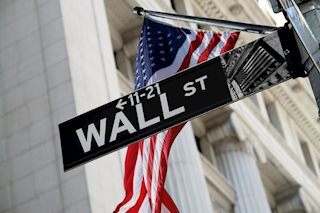US Initial Jobless Claims Preview: Recessionary timelines
|
- Claims expected to be the highest in the series 53 year history.
- Estimates for initial jobless benefits range from 1 million to 4 million.
- Previous highs were 695,000 in October 1982 and 665,000 in March 2009.
- Restaurant and travel industries particularly hard hit.
The Department of Labor will issue its initial jobless claims for the week of March 20 on Thursday March 26 at 12:30 GMT, 8:30 EDT.
Forecast
Initial claims are expected to rise to 1,000,000 from 281,000 the prior week. The range of the estimates is extraordinarily wide from 1 million to 4 million. The four-week moving average was 232,250 in the week of March 13.
Jobless claims as indicator
The speed at which large sectors of the economy have closed down is expected to produce the most severe shock to the labor market in US history.
Between 1 and 4 million workers are forecast to have filed for unemployment benefits in the week through March 21. The magnitude of the claims will be the first indication of how extensive is the damage to the US economy caused by the abrupt business closures from the spread of the Coronavirus.
The travel, hospitality and leisure sectors employ15.8 million people and are largely shut with many of their non-managerial workers fired. Restaurant industry representatives have said that 5 to 7 million jobs could be lost. Employment losses are expected to continue in the weeks ahead with the intensity perhaps indicated by this initial figure.
Even the rapid rise in claims which began in January 2008 took more than a year to climb from 321,000 to its peak at 665,000 in March 2008 and is dwarfed by this week’s anticipated inundation.
In January 2008 the US was already in recession and unemployment claims were signaling beginning of the financial crisis. Last month the US economy was expanding at an estimated 3.1% annualized rate in the Atlanta Fed GDPNow model and sometime in March it is expected to have flipped into contraction.
The climb to the all-time high for claims of 695,000 in October 1982 from 392,000 in April 1981 also took place largely in context of deep 1981-1982 recession.
Economic impact
There has never been an occasion where healthy fully employed industrial economy was thrown overnight into a recession of unknown depth and longevity.
Hurricanes Harvey which struck the Gulf Coast in 2017 and caused $126 billion in damage and Katrina in 2005 which hit New Orleans and cost $125 billion did not come close to pushing the US economy into recession. The recoveries started the day the winds and tides subsided.
The duration of this shutdown and the speed at which the economy can reopen and employees return to their jobs depends on the course of the pandemic. The longer the closures continue the more of the job losses will become permanent and the more widespread the economic damage.
In the US where about 70% of economic activity is the product of consumer spending, any substantial decline in consumption translates quickly into lost employment and production.
Economists anticipate a decline in GDP in the second quarter from 5% to 10% and unemployment rising from 3.5% to 7% to 10% contingent on the severity of the viral spread and the percent of the country that is forced out of work. It is currently estimated that about 40% of the US population is to some degree in voluntary or mandatory restriction.
Government stimulus
The $2 trillion stimulus and support package that has been agreed by Congress but not yet passed will help to mitigate the impact of the job and income losses. It is designed to tide the economy over until normal functioning returns. It cannot replace the economic life of the country.
Conclusion
The normal continuity of US economic growth from quarter to quarter has been dealt its sharpest blow in history.
The US economy was not in recession in the first quarter, by every judgement it will be in the second.
It may be one of the steepest recessions since the Depression in terms of output and certainly in job losses but it could also be on one of the shortest. If the virus is contained in a month the economy could come roaring back. If it takes 12 weeks or longer and the economy requires a careful and measured reopening, the recession could linger through the end of the year.
Information on these pages contains forward-looking statements that involve risks and uncertainties. Markets and instruments profiled on this page are for informational purposes only and should not in any way come across as a recommendation to buy or sell in these assets. You should do your own thorough research before making any investment decisions. FXStreet does not in any way guarantee that this information is free from mistakes, errors, or material misstatements. It also does not guarantee that this information is of a timely nature. Investing in Open Markets involves a great deal of risk, including the loss of all or a portion of your investment, as well as emotional distress. All risks, losses and costs associated with investing, including total loss of principal, are your responsibility. The views and opinions expressed in this article are those of the authors and do not necessarily reflect the official policy or position of FXStreet nor its advertisers.